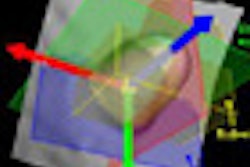Speakers at this week's hearings on medical radiation dose at the U.S. Food and Drug Administration (FDA) were told that attacking the problem of rising dose requires a focus on radiologic technologist (RT) training. In particular, RTs need career-long training to remain competent in their jobs.
Ensuring the competency of radiologic technologists has emerged as a key issue in the radiation safety debate. Medical technology has become increasingly complex over the years, increasing the potential for serious errors in the diagnostic and therapeutic use of radiation. At the same time, the training requirements for radiologic technologists remain a patchwork of state-by-state rules that have barely changed over the years.
At the FDA hearings this week, the FDA heard from representatives of the Alliance for Radiation Safety in Pediatric Imaging and the American Society of Radiologic Technologists (ASRT). Speakers from both groups focused on the need for up-to-date training for the clinical staff members who perform exams to keep abreast with the rapid pace of innovation in diagnostic imaging equipment.
Regular training is needed
Radiologic technologists, whether experienced or just starting their careers, need regular training to keep on top of the steady stream of changes and innovations from modality equipment manufacturers, according to Greg Morrison, chief operating officer of the Albuquerque, NM-headquartered ASRT.
The ASRT recommends a blended learning environment that combines traditional lecture-based, face-to-face, hands-on training with simulation, webcasts, and Internet-accessible interactive educational courses and short training modules. Morrison referenced the recommendations of ASRT's 2008 white paper addressing the use of new models and tools to provide instructional technology in radiologic sciences as a guideline for equipment manufacturers to emulate.
Radiology departments and the manufacturers who provide applications training for diagnostic imaging equipment need to be proactive with respect to training, Morrison said. This means that ample time should be allocated to vendor applications specialists and designated superusers to provide dedicated, uninterrupted training time for all technologists who may use the equipment.
Vendors need to provide educational materials in advance of training, build problem-solving and question-and-answer segments into training sessions, and develop creative ways and formal evaluations to assess and document what technologists have learned. Developing more educational products that technologists could use after completing training would also be helpful, Morrison suggested.
Christine Lung, ASRT's vice president of government relations and public policy, asked FDA officials to mandate the enhancement of user training manuals and require a greater amount of onsite applications training when diagnostic imaging equipment is being installed or a major software upgrade is implemented. She stressed that radiology department managers, supervisors, and equipment manufacturers should not underestimate the need for thorough training of technologists.
Just-in-time safeguards also need to supplement training. Technologists need on-screen warnings prior to performing procedures if a radiation dose selected is above or below nationally established recommendations. As soon as national radiation dose indexes are created, dose parameter warnings need to be built into the workstations as safeguards, Lung recommended.
Lack of national licensing standards
Lung also pointed out that the lack of national licensing standards and enforcement consistency of regulatory agencies means that in some states, operators of radiation-emitting diagnostic imaging equipment may have never received education about radiation protection. Vendors need to fill the void where some state regulations and licensing requirements fall short in ensuring that patients will have exams performed by qualified clinical staff.
When vendors sell equipment in states with questionable licensing requirements or no licensing requirements at all, they must recognize that the standard training they provide may not be understood by noncertified, nonlicensed technologists. Remedial training may be required in these circumstances, according to Lung.
"I think that the FDA officials were very interested in learning how the disparity of licensing requirements among states could affect radiation safety," Lung told AuntMinnie.com. "We used this opportunity to also promote the need for the passage of the CARE bill [HR 3652], proposed legislation first introduced in Congress in 1999 to require minimum educational and certification standards for healthcare workers who administer radiologic procedures."
Pediatric dose education
Both Morrison and Lund lauded the Image Gently dose awareness campaign, designed to minimize the exposure of children to radiation dose. Image Gently advocates were well represented at the FDA hearings, with presenters at all sessions.
Dr. Marilyn Goske, chair of the Alliance for Radiation Safety in Pediatric Imaging, the organization responsible for implementing the Image Gently campaign, reiterated recommendations made by ASRT.
She proposed that vendors identify a team of superusers consisting of at least one radiologist, one radiologic technologist, and one medical physicist at each diagnostic imaging facility where they install equipment or do onsite training. Goske recommended that vendors need to provide enough free material relating to the safe operation of the equipment so that each technologist has his or her own copy.
Technologists on all shifts also need equal training. Goske told AuntMinnie.com that "one of the points that I made is that while vendors do provide quality applications training, it is imperative that this training extend to the technologists who work on the third, or graveyard, shift. These radiologic technologists may never have one-on-one access to a vendor's applications training specialist, or may have very limited access. They need to be just as well trained as their colleagues working on the day and evening shift, and need just-in-time materials or immediate access to information that provides answers to their questions."
"Manufacturers of imaging equipment and medical professionals want to achieve the same objective: optimizing radiation dose and technique to create a quality image, from which an accurate diagnosis can be made, while using the least amount of radiation dose to achieve this," she continued. "Manufacturers know best how to use their equipment, and, for this reason, they need to reach out to all individuals working in a radiology department. Healthcare facilities need to assume the responsibility of documenting that each of their employees receives vendor-provided information and demonstrates both understanding and competency with respect to what the information represents."
Keith Strauss, Ph.D., a medical physicist at Children's Hospital Boston in Massachusetts and the American Association of Physicists in Medicine (AAPM) representative on the Image Gently physics steering committee, took a broader position. He pointed out that many physicians, including radiologists, were not aware that the dose index displayed on a CT scanner is not indicative of the dose received by a patient, whether a child or an adult, and that a national awareness campaign about this fact was needed.
"Radiologists, physicians, and radiologic technologists and professionals involved with electronic medical records need to be educated about what the CT dose index volume [CTDIvol] means. Putting this into an electronic medical record without the use of algorithms modifying this based on patient size would be inaccurate," Strauss said. "Is a huge educational awareness initiative about the need for software to literally customize the CTDIvol to each patient considered training? I suggest it is."
By Cynthia E. Keen
AuntMinnie.com staff writer
April 1, 2010
Related Reading
FDA hearings rise above medical radiation rhetoric, March 31, 2010
VC grilled in radiation hearings, March 31, 2010
Radiology gears up for FDA radiation hearings, March 30, 2010
Medical groups tell Congress more radiation rules are needed, March 1, 2010
Congress surprised at lack of medical radiation oversight, February 26, 2010
Copyright © 2010 AuntMinnie.com



















